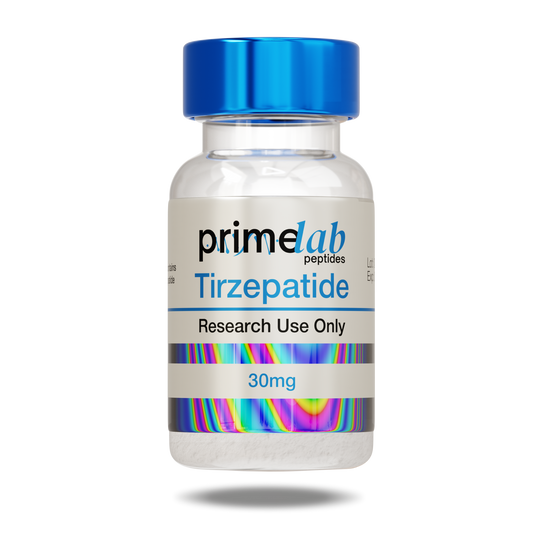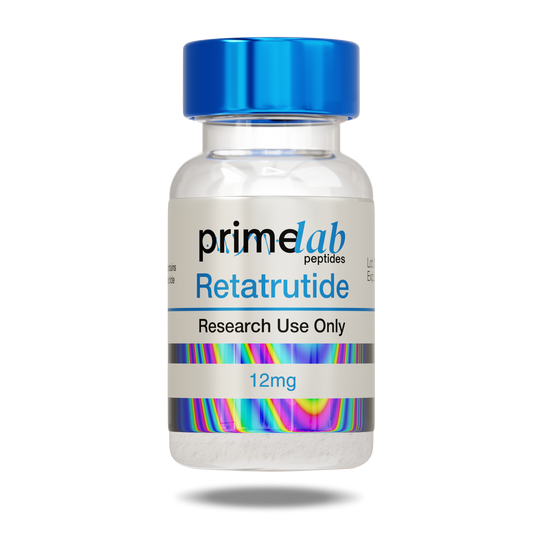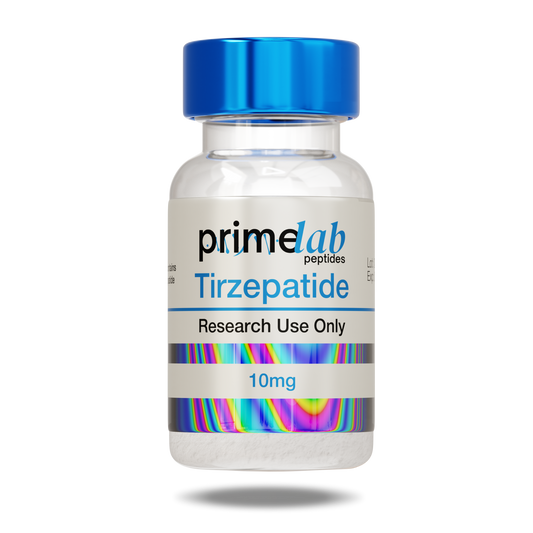All product descriptions and articles provided on this website are intended strictly for informational and educational purposes. Our products are designed exclusively for in-vitro research (i.e., experiments conducted outside of a living organism, typically in glassware such as test tubes or petri dishes). These compounds are not approved by the FDA for use in humans or animals. They are not medications, nor are they intended to diagnose, treat, prevent, or cure any disease or medical condition. Any bodily administration-human or animal-is strictly prohibited by law. Our products are not for human consumption under any circumstances.

Obesity is a major global health issue connected to several metabolic and cardiovascular disorders. As a result, researchers are actively exploring new molecules that could help regulate fat metabolism. Among these, AOD 9604, a peptide fragment derived from human growth hormone, has gained attention in recent studies. Furthermore, clinical and preclinical research indicates that it may influence fat metabolism without the side effects associated with full hGH treatments.
At Prime Lab Peptides, we are committed to supporting scientific innovation by offering high-quality research-grade peptides, such as AOD 9604. Our products are designed to help researchers overcome experimental challenges with reliability and consistency. We prioritize purity, precision, and transparency to empower meaningful discoveries in peptide and metabolic research worldwide.
How Does AOD-9604 Mechanistically Affect Fat Metabolism?
AOD 9604 affects fat metabolism by targeting specific biochemical pathways that regulate how the body stores and breaks down fat. It acts selectively on lipid metabolism, avoiding the broader hormonal effects seen with full growth hormone treatments.
Recent findings highlight its key actions:
- Stimulates lipolysis by activating enzymes that facilitate the release of stored fat.
- Suppresses lipogenesis by reducing acetyl-CoA carboxylase activity in cells.
- Enhances fatty acid oxidation by regulating beta-3 adrenergic receptor expression.
Moreover, AOD 9604 demonstrates strong metabolic activity by enhancing fat breakdown and regulating weight gain in preclinical studies. The research published on Karger[1] showed that obese Zucker rats treated orally with AOD 9604 had over 50% less body weight gain and increased lipolytic activity. Importantly, no adverse effects on insulin sensitivity were observed, confirming its safe metabolic profile in controlled studies.
What Are the Safety and Pharmacokinetic Profiles in Studies?
AOD 9604 demonstrates a favorable safety and pharmacokinetic profile across multiple toxicology and clinical studies. Research consistently shows low toxicity, minimal immunogenicity, and no significant adverse effects in controlled experimental conditions, supporting its suitability for scientific investigation rather than therapeutic application.
Extensive evidence highlights its key safety characteristics:
- No genotoxic or mutagenic activity: The JofEM study[2] on AOD 9604 reported no genotoxic effects in rats and cynomolgus monkeys during Ames, chromosomal aberration, and bone micronucleus assays. These findings confirm its strong genetic safety profile under controlled laboratory conditions.
- Minimal immunogenic potential: Long-term studies in rodents and primates report no antibody formation, suggesting a low risk of immune reactions following repeated exposure to the peptide.
- No organ or biochemical toxicity: Extended oral dosing trials indicate stable organ function, hematology, and biochemistry parameters, emphasizing the peptide’s consistent safety across multiple study models.
Moreover, pharmacokinetic evaluations reveal that AOD 9604 has a short plasma half-life of about three to four minutes intravenously and slower absorption when administered orally. Consequently, its rapid metabolism into active fragments and lack of systemic accumulation highlight a strong clearance profile, reducing the potential for peptide build-up or toxicity.

What Do Clinical Trials Reveal About AOD-9604 Efficacy?
Clinical trials reveal that AOD 9604 shows strong efficacy in supporting fat metabolism and metabolic regulation. A Journal of Endocrinology and Metabolism[3] study reported consistent reductions in body fat, improved glucose tolerance, and stable IGF-1 levels. Moreover, participants exhibited excellent tolerability and no severe adverse events. These findings confirm AOD 9604’s safety and effectiveness in controlled metabolic research environments.
However, subsequent trials incorporating dietary and exercise interventions produced less conclusive results. Even so, the moderate fat loss observed aligns with AOD 9604’s targeted mechanism rather than broad hormonal activity. Additionally, the absence of IGF-1 stimulation distinguishes it from growth hormone therapies. Overall, clinical evidence supports its potential as a controlled research peptide for metabolic health studies, not as a therapeutic agent.
How Do Preclinical and Animal Models Support Clinical Findings?
Preclinical and animal studies validate the clinical findings on AOD 9604 by demonstrating its clear impact on fat metabolism and β3-adrenergic receptor activity. According to a Monash University[4] study, AOD 9604 enhanced lipolysis, increased β3-AR expression, and reduced body fat in obese mice, supporting its translational metabolic relevance.
Robust evidence highlights three major research insights:
1. Enhanced Fat Metabolism
Animal studies in rodents and pigs show increased lipolysis and reduced fat accumulation during chronic dosing. These results parallel human data, confirming consistent metabolic benefits through improved fat breakdown and regulated lipid storage.
2. Elevated Energy Expenditure
Preclinical findings demonstrate higher energy expenditure and greater fat oxidation in obese models. This aligns with observed metabolic improvements in clinical trials, reinforcing the peptide’s role in supporting balanced energy utilization and metabolic efficiency.
3. Strong Safety and Target Specificity
Toxicology and distribution studies reveal safety even at high doses. Radiolabeled trials indicate targeted peptide accumulation in the pancreas, liver, and adipose tissue, suggesting precise metabolic activity without systemic toxicity.
Advancing Fat Metabolism Research with AOD 9604 from Prime Lab Peptide
Researchers in metabolic regulation often encounter difficulties accessing high-purity compounds and maintaining peptide stability during experiments. These inconsistencies can lead to data variability and hinder reproducibility. As a result, drawing precise conclusions about complex processes, such as fat oxidation, lipid metabolism, and overall energy balance, becomes a significant challenge in controlled research settings.
At Prime Lab Peptides, we offer research-grade AOD 9604 built for reproducibility and scientific precision. Our commitment lies in quality control, transparency, and reliable sourcing. This helps researchers overcome common experimental challenges with confidence. For more details or to explore collaboration opportunities, please contact us to support your next research study.
FAQs
What makes AOD 9604 valuable in metabolic research?
AOD 9604 is valuable because it specifically targets lipid metabolism pathways without broad hormonal interference. It helps researchers analyze fat oxidation and energy regulation mechanisms. Moreover, its selective action provides controlled insights for experimental metabolic studies.
How does AOD 9604 differ from full hGH?
AOD 9604 differs by acting on fat metabolism without elevating IGF-1 levels. This selectivity reduces systemic effects seen with full growth hormone. Consequently, it allows researchers to study isolated metabolic responses more accurately.
What do pharmacokinetic studies reveal about AOD 9604?
Pharmacokinetic studies show that AOD 9604 has a short plasma half-life with rapid metabolism into active fragments. These fragments remain bioactive, maintaining metabolic influence. Thus, it demonstrates efficient clearance and limited systemic accumulation.
How do preclinical studies support AOD 9604 findings?
Preclinical studies confirm increased lipolysis, improved fat oxidation, and enhanced energy expenditure in animal models. These outcomes align with the results of human trials. Therefore, they provide a strong translational foundation for metabolic research applications.
References




